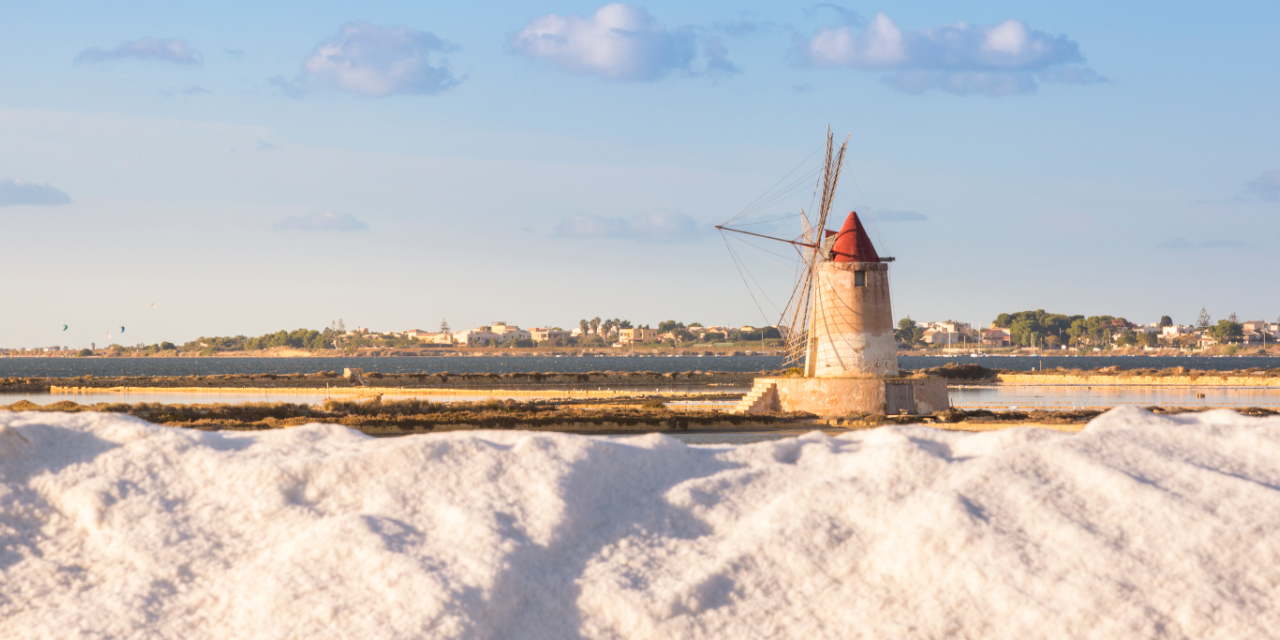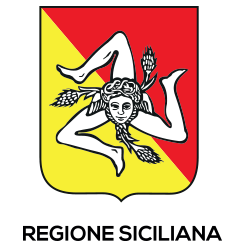When one thinks of Sicily, one thinks of summer: sea, beaches, history and monuments. Yet, cycling fans also think of the Giro di Sicilia, which re-appeared on the calendar in 2019 after an absence of 42 years.
And to be honest, the Giro di Sicilia encapsulates all that beauty and uniqueness of this beloved region in just four days of racing.
This year’s edition will be no exception. The first stage gets off to a strong start: from Marsala and the salt pans to Agrigento and the Valley of the Temples, for 159 km mostly along the Mediterranean.
The Saline di Ettore e Infresa were built along the coast of the Stagnone (Sicily’s largest lagoon) between 1492 and 1508 upon permission of the Spanish viceroys, and since then, an old salt mill – still running today thanks to a major restoration – has provided the setting for one of the most beautiful and photographed sunsets in Europe.
Trapani PGI sea salt, the first of protected origin in Italy, is produced right here. In case you feel hungry, fish couscous is typical in Marsala and in the Trapani area and, as dessert, dont’ miss “cassatelle”, highly recommended during the Easter period.
Stage 1 will take the riders across places that ooze history, and the finish line, located just a few metres from the Valley of the Temples, will be no exception. Featuring Doric temples from the Hellenic period in an excellent state of preservation, this is an archaeological park located on the site of the ancient Akragas, the original settlement of the city of Agrigento.
Since 1997, the entire area has been listed as a UNESCO World Heritage Site and, with its 1300 hectares, it is one of the largest archaeological sites in the world. The Mediterranean scrub of this area of Sicily blends in with the archaeological remains and surrounds the sandstone walls of the park, thus forming a wonderful backdrop.
In the second stage, the sea will give way to the mainland, taking the peloton from Canicattì to Vittoria over 193 km without too many technical pitfalls.
Before enjoying the highly probable sprint finish, fans can take a stroll through the historic centre of Vittoria, where Piazza del Popolo stands out. This is the town’s gathering point, where the main streets of the centre all come together: via Cavour, via Bixio, via Garibaldi, via Cancellieri. Piazza del Popolo is overlooked by the Vittoria Colonna municipal theatre, a jewel of Neoclassicism, named after the city’s founder.
In the centre of the square stands the War Memorial to the Unknown Soldier, a work by sculptor Turillo Sindoni. The Vittoria area also produces Cerasuolo di Vittoria DOCG wine, the only Sicilian wine to be given this distinction (the highest classification Italian wines can be awarded).
Fancy a bite? In the Agrigento area, we recommend trying the “Minestra I Sicci”, a springtime cuttlefish soup, or, for meat lovers, the “Stigghiola”, a typical Sicilian street food dish made with lamb or kid entrails, often served on a stick by the so-called stigghiulari who, with their stalls and stands, are another landmark of the square, especially in the evenings.
The third stage will take the riders back to the sea, this time on the northern coast. From Enna to Termini Imerese for a total of 150 km once again suitable for sprinters.
The start will be held in Europe’s highest province town, enchanting visitors thanks to the beauty of its nature and scenery. Located on a ridge of Mount Erei, in the beautiful Sicilian hinterland, Enna is the only Sicilian province not to be washed by the sea. Because of its location right in the centre of the region, it was referred to by Callimachus as the “omphalos” (the belly button) of the island.
And guarding the riders from above is the Castello di Lombardia, one of the largest medieval castles in Italy, located on the highest point of the city. It probably owes its name to a garrison of Lombard soldiers placed there to defend the fortress in the Norman era. Of the twenty towers that once formed part of it, the remains of six survive today, three of which are almost intact: among these is the Torre delle Aquile (Tower of the Eagles), also known as the Pisana, due to the rumors according to which, back in the days, it had been guarded by a contingent of Pisans.
The local cuisine is characterised by typical mountain flavours. Pasta dishes include the famous “pasta ricasciata” (a timbale of macaroni with meat sauce, eggs, salami, cheese and peas) and “maccheroni in agrodolce” (made with meat sauce, aubergines, sugar and cinnamon).
Among the meat dishes, pork definitely prevails: we therefore recommend the delicious “salsiccia magna”, prepared with fennel seeds and caciocavallo cheese. And speaking of cheese, the most famous are “u primu sali” salted ricotta cheese, and “piacentinu” pecorino cheese flavoured with black peppercorns and saffron. Among the desserts, the most renowned are “cubbaita” (Arabic nougat with sesame, honey and almonds) and “ditini” cinnamon biscuits. These delicacies are often accompanied by wines such as Tudia and the very famous Amaro Averna.
The longest and most altimetrically demanding stage, however, will be the last one: from Barcellona Pozzo di Gotto to Giarre for 216 km and, making sure we do not miss a thing, a ‘little excursion’ to Mount Etna. The Basilica Minore di San Sebastiano stands out in the Cathedral Square of Barcellona Pozzo di Gotto; it was built in neoclassical style after the catastrophic Messina earthquake of 1908, which severely damaged the old cathedral of San Sebastiano.
The façade recalls that of the basilica of Sant’Andrea della Valle located in Corso Vittorio Emanuele in Rome, while the dome is inspired by the one designed by Federico Juvarra for the basilica of Superga, in Turin.
The grand finale will take place in Giarre, whose centre developed around two streets, Via Callipoli and Via Archimede, now Corso Italia. The entire area is made up of lava cobblestone streets and patrician buildings erected between the 18th century and the beginning of the 20th century; some Art Nouveau details such as the Bonaventura palace and the former Fratelli di Mauro hydroelectric power station are also worth noting.
In the main square is the neoclassical Mother Church, dedicated to St. Isidoro Agricola, dating back to 1794. Giarre’s typical products include “cor’i cani” (“heart of dog”): don’t worry though, it’s just a local drink made with lemon granita, mint and water.
Whether you love nature and sea, or history and monuments, or urban traditions, gastronomy and excursions, the Giro di Sicilia 2023 is not going to let you down.




























